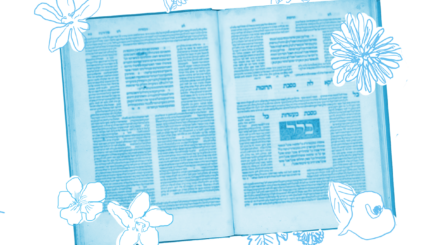Though we have been discussing capital punishment for a while now, the mishnah on yesterday’s daf was the first to summarize all the forms it can take:
Four types of death were given over to the court: Stoning, burning, killing (by decapitation) and strangulation. Rabbi Shimon says: Burning, stoning, strangulation and killing.
Both the anonymous voice of the mishnah and Rabbi Shimon agree on the four methods of execution available to the court. But, as the Gemara explains, they disagree about the order of severity of the punishments — which is to say, not all capital punishments are created equal. The Gemara somewhat obsessively tries to discern how one can rank punishments by comparing the respective severity of the transgressions that incur them.
Let’s take a look at burning. The paradigmatic case is a priest’s daughter who commits adultery and is burned to death for her sin. Generally, adulterers are punished with strangulation, but when it’s the daughter of a priest who commits adultery, the punishment is burning — a more severe punishment according to both the mishnah and Rabbi Shimon. But what happens if the priest’s daughter is betrothed instead of married? On today’s daf, the Gemara records a dispute about the punishment in such a case:
Rabbi Yohanan was wont to say: A betrothed young woman who is the daughter of a priest and who committed adultery (is executed) by stoning. Rabbi Shimon says: By burning. (A betrothed young woman who) engaged in intercourse with her father by stoning. Rabbi Shimon says: By burning.
Normally, a betrothed woman who commits adultery is punished with stoning, while a married woman is strangled. Rabbi Yohanan and Rabbi Shimon disagree over how this maps on to similar cases, such as a betrothed priest’s daughter who commits adultery or a betrothed woman who sleeps with her own father. Are they considered comparable to a married priest’s daughter or an ordinary woman who sleeps with her father, who are punished by burning? Or are they most comparable to the betrothed woman who commits adultery and is punished by stoning?
The Gemara questions:
What does this teach us? According to the rabbis, the married (daughter of a priest) is singled out for burning, and not a betrothed one. According to Rabbi Shimon, whether she is betrothed or married, she is singled out for burning. And what is the reason? It is because according to the rabbis, stoning is more severe, and according to Rabbi Shimon burning is more severe.
The final line here is crucial. Ultimately, the Gemara concludes, a betrothed priest’s daughter and a betrothed daughter who sleeps with her father merit the most severe punishment. The dispute is only which punishment that happens to be. Since the rabbis believe stoning to be more severe, one who could be liable for either stoning or burning is stoned. For Rabbi Shimon, someone liable for one of those punishments would be burned.
The Gemara points out a broader practical law that emerges from this dispute:
There is a practical difference: That one who was sentenced to two court death penalties (for two sins) is punished with the more severe one.
A person can only die in one manner, so when they are liable for one or more capital punishments of different natures, they’re given the most severe one. The question of which punishment that is hinges on the dispute laid out in our mishnah. Since we end up ruling like the rabbis against Rabbi Shimon, this means that anyone who merits stoning or another punishment is sentenced to stoning.
Read all of Sanhedrin 50 on Sefaria.
This piece originally appeared in a My Jewish Learning Daf Yomi email newsletter sent on February 5, 2025. If you are interested in receiving the newsletter, sign up here.
With your help, My Jewish Learning can provide endless opportunities for learning, connection and discovery.



